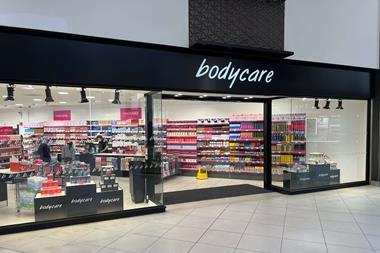It’s been a fraught year for retailers, but is the Government easing or exacerbating their pain? Ben Cooper examines how a raft of legislation is adding to their burdens.
On top of the multitude of challenges retailers have had to face this year, the Government hasn’t made their lives any easier from a property perspective. Throughout the year a slew of new legislation, pieces of research, guidance, initiatives and levies has come thick and fast from Whitehall and all have had or will have a major impact on retailers.
The first – the abolition of the empty property rate relief – was swiftly followed by a further revision to the Planning Policy Statement 6 (PPS6) recommendations, a phased introduction of Energy Performance Certificates, a business levy in London to fund Crossrail, and in the past month a further business rate supplement announcement and the publication of the long-awaited Killian Pretty Review (see box). And then, of course, retailers have the business rates revaluation to look forward to in 2010 plus rises next year.
Most of this government tinkering has one very unwanted side effect: cost. Retailers are realistic; if there is some tangible benefit, it makes that extra cost a little easier to bear. But retailers are upset because they can see very little – if any – immediate benefit in the glut of legislation listed above. To make matters worse, most of this extra financial burden arrives at the worst possible trading time and when retailers are doing their utmost to cut costs.
Sainsbury’s business development director Vince Prior says: “The recent news flow in the retail sector shows just how challenging trading conditions are in the run-up to Christmas.” He adds: “In a tough market the added burdens imposed by the 5 per cent increase in universal business rates coming in next spring, the 2010 revaluation and the reduction in empty rates relief are particularly unwelcome. While the pre-Budget report did extend the empty rates relief for smaller premises, it could have gone a lot further.”
The scrapping of the 50 per cent empty property rate relief introduced on April 1 is among the most controversial Government initiatives introduced this year. The end of the relief represented extra costs of hundreds of thousands of pounds for many landlords and retailers that own or have the leasehold on empty units.
The Government says the axing of relief was intended to be a means of reducing the number of voids on the market. But many of those affected have viewed it as a handy way for the Government to tax the industry£1 billion a year.
Travis Perkins property director Martin Meech says: “The Government has been very good over the last 10 years at raising taxes indirectly. Changing empty rates as a means of encouraging people to take up space is fine when the economy is growing and there’s a demand for space, but most retailers are trying to shed space. At a time when we’re all cutting costs it’s pretty unhelpful.”
Since April the situation in the property market has gone from mediocre to bad to much, much worse. There have been an increasing number of voids both on the high street and out of town as retailers have gone into administration and retailers everywhere try to slim down their property portfolios. Landlords and retailers feel they have been hit by a stealth tax introduced by a government that doesn’t seem to understand the basic principle that if property is unoccupied, generally it is for a very good reason.
Hartnell Taylor Cook head of rating Martin Davenport explains: “The reason the property is vacant is because you can’t let it or don’t need it. People don’t just leave property empty for no reason. For retailers if you’ve got a leasehold you can’t demolish the property.”
The British Retail Consortium (BRC) estimates the cost to retailers to be in the region of£120 million a year. Since the 50 per cent relief was scrapped, momentum has gathered behind a campaign to urge the Government to do a u-turn. The BRC and the British Property Federation (BPF) and their members have all lobbied the Government in the hope that the pressure will force a change of heart.
Rate rage
The only movement from the Government on the subject came in the Chancellor’s pre-Budget report last month, when it reinstated empty rates relief for small businesses. However, this initiative will do little to help the majority of businesses because it only applies to properties with a rateable value of£15,000 a year or less.
The Government claims this covers 70 per cent of all empty commercial buildings, but as Davenport points out: “Roughly this equates to properties where the rent is less than£20,000 a year, and there aren’t many retail properties costing that. It may be 70 per cent of hereditaments, but that could mean a public toilet or an ATM. It’s completely misleading.”
A BRC spokesman says: “Our view is this is nowhere near sufficient, and we will continue to work in 2009 for void properties to be given a 50 per cent business rate relief in perpetuity, following full relief for an initial period of three months.”
Davenport believes the Government should have reduced the rate from 100 per cent to 50 per cent for all empty commercial property. However, he adds: “It’s too easy to collect and they need the money. The Government had the ability to reduce the rate back to 50 per cent without the need for too much legislation and they decided not to do it. It’s unlikely now that they will do anything.”
Also bubbling away this year have been two pieces of government research that are likely to have a huge impact on the way the industry operates in years to come. The publishing in July of the final PPS6 report is another step towards real government action that will have wide-reaching implications for both in-town and out-of-town retail.
Likely to be finalised next year, PPS6 could bring several major benefits to the planning process and the wider retailer industry. BPF planning policy officer Jonathan Seager says: “A lot of people are saying that PPS6 will free up edge-of-town and city locations. We’re waiting for it to be finalised and for the practice guidance to be published.”
One of the report’s key recommendations was the scrapping of the needs test for planning applications and replacing it with a more detailed and thorough impact test. Meech says the effects of PPS6 will only be felt in the long term, with the short term being dictated more by market conditions. He says: “Doing away with the needs test and having a more impact-based test is sensible, but it’ll only start having an effect when we come through this recession.”
One piece of better news this year – and one that is likely to bring more immediate benefit to retailers – is the Killian Pretty Review. This research – commissioned by the Government and published at the end of last month – outlines in detail the problems with the planning process and potential solutions.
Seager says the review’s recommendations would speed up the process and save costs. “It frees up local authority resources. The advantage the review had was that everybody thinks the same thing. Everybody agreed what the problems are with the planning process. Now we need action from the Government and next year should be the year for action,” he says.
That the Government has conducted the review into planning is good news. However, the problems in the system have been known for many years and there are those who argue that conducting the report has merely delayed any change.
It’s been a particularly unsettling year and worries abound about what could be a catastrophic 2009 for retailers. The last thing they need is a greater financial burden that accompanies many of these government stipulations. Now retailers want some respite.
Key measures in 2008
Empty Property Rate Relief – April
The year’s most controversial and universally unpopular move by the Government was to do away with the 50 per cent relief offered to landlords and retailers unable to fill empty property.
Energy Performance Certificates – April (first stage)
As part of the Government’s drive to reduce the carbon footprint of property, Energy Performance Certificates are being rolled out in phases this year. These require landlords to state how efficient their buildings are.
Crossrail Levy – July
Only affecting London, a new business rates levy to fund the£16 billion Crossrail project – which was approved in July – is likely to become law next year. Businesses with a rateable value of£50,000 or more could have to pay an extra 2p in the pound from April next year.
Killian Pretty Review (published) – November
Published last month, the Killian Pretty Review is a welcome relief for the whole of retail property. The report clearly lays out the problems in the planning system and recommends sensible measures to improve it.
Business Rates Supplements Bill – December
A new cost in the form of additional levy powers for local authorities was announced last week. The Business Rates Supplements Bill has already been met with frustration from retailers now facing further cost rises once it is enacted.


























No comments yet